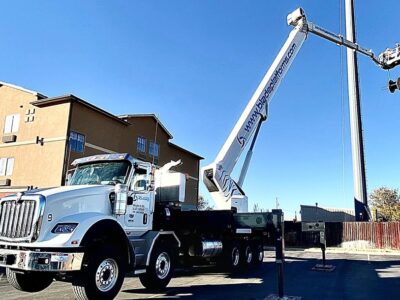Fixed Deposits (FDs) are widely regarded as a safe and secure investment option, but within the realm of FDs, there are various options that cater to different risk tolerances. While FDs are generally low-risk, factors such as the financial institution’s stability, interest rates, and tenure can influence the level of risk and the potential returns. This article will explore the different FD options available for varying risk tolerances, how to find the maximum interest rate on FD, and considerations around FD tax implications.
Understanding Risk Tolerance in FDs
Risk tolerance refers to an investor’s ability and willingness to endure fluctuations in the value of their investments. While Fixed Deposits are considered low-risk compared to market-linked instruments like stocks, there are still varying levels of risk associated with different FD options.
- Low-Risk Tolerance: Investors with low risk tolerance prefer safety and capital preservation over high returns. They are usually conservative investors who may be nearing retirement, have fixed income needs, or simply prefer the assurance of guaranteed returns. For these investors, FDs from large, well-established public sector banks or AAA-rated institutions are ideal.
- Moderate-Risk Tolerance: Investors with moderate risk tolerance are willing to accept slightly higher risk in exchange for potentially better returns. They might choose FDs from reputed private sector banks or NBFCs that offer competitive interest rates. While these institutions are generally safe, they might offer a higher interest rate on FD to attract investors.
- High-Risk Tolerance: Investors with high risk tolerance are open to taking on more risk for the possibility of higher returns. They may consider FDs from smaller or less established banks and NBFCs, which often offer the highest interest rates. However, these institutions might not have the same level of financial stability as larger banks, increasing the risk of default.
Finding the Maximum Interest Rate on FD
For investors looking to maximise their returns, finding the maximum interest rate on FD is a primary objective. Here’s how to go about it:
- Compare Rates Across Banks and NBFCs: Interest rates on FDs vary significantly across different banks and financial institutions. Public sector banks often offer lower rates, while private banks and NBFCs might offer higher rates to attract deposits. Using online comparison tools can help you identify which institutions are offering the highest rates for the desired tenure.
- Consider Special FD Schemes: Some banks and NBFCs offer special FD schemes with promotional rates. These schemes might be tied to specific tenures or deposit amounts and can provide an opportunity to lock in a maximum interest rate on FD. However, it’s essential to read the terms and conditions carefully, as these schemes may have stricter penalties for premature withdrawal or limited liquidity options.
- Evaluate the Institution’s Stability: While chasing the highest interest rates, it’s crucial to consider the financial stability of the institution. A higher interest rate might come with higher risk if the institution is not financially robust. Checking the credit ratings of banks and NBFCs can provide insight into their stability. AAA-rated institutions, while offering slightly lower rates, provide greater security.
- Understand the Impact of Tenure on Interest Rates: Longer tenures generally offer higher interest rates, but this is not always the case. It’s essential to compare the rates for different tenures and decide based on your liquidity needs and financial goals. For example, a 5-year FD might offer a better rate than a 3-year FD, but it also locks in your funds for a longer period.
Tax Implications on FDs
While Fixed Deposits offer guaranteed returns, it’s important to consider the tax implications, as FD tax can significantly impact your net returns.
- Interest Income Taxation: The interest earned on FDs is fully taxable and is added to your income under the head “Income from Other Sources.” The tax rate applicable depends on your income tax slab. For individuals in higher tax brackets, the post-tax return on FDs may be lower than expected, especially if the interest is significant.
- Tax Deducted at Source (TDS): Banks are required to deduct TDS on FD interest if it exceeds Rs. 40,000 in a financial year (Rs. 50,000 for senior citizens). The TDS rate is 10% if you have provided your PAN details. If you fall in a higher tax bracket, you will need to pay additional tax when filing your return. However, if your total income is below the taxable limit, you can submit Form 15G or 15H to avoid TDS.
- Impact on Net Returns: It’s essential to calculate the post-tax returns on your FDs, especially if you are in a higher tax bracket. An FD with a high nominal interest rate may offer lower net returns after accounting for taxes. Using an FD calculator that factors in tax implications can help you estimate your actual earnings.
- Tax-Saving FDs: To mitigate the impact of taxes, consider investing in tax-saving FDs. These are eligible for deductions under Section 80C of the Income Tax Act, up to Rs. 1.5 lakh per annum. However, they come with a lock-in period of five years, during which you cannot withdraw the funds. While the interest earned is still taxable, the deduction can help reduce your overall tax liability.
Matching FD Options to Risk Tolerance
Given the variety of FD options available, it’s essential to match the choice of FD to your risk tolerance:
- For Low-Risk Tolerance: Choose FDs from large public sector banks or AAA-rated institutions. These offer lower interest rates but come with the assurance of safety and stability. The priority here is capital preservation, making these FDs suitable for conservative investors.
- For Moderate-Risk Tolerance: Consider FDs from reputed private sector banks or well-established NBFCs. These institutions often offer competitive rates, balancing the need for higher returns with acceptable levels of risk. This option is suitable for investors who want to earn a bit more while still maintaining a reasonable level of safety.
- For High-Risk Tolerance: If you are willing to take on more risk for the chance of higher returns, explore FDs from smaller banks or newer NBFCs. While these institutions might offer the highest interest rates, they also carry higher risk. It’s crucial to thoroughly research the financial health of these institutions before investing.
Strategies to Mitigate Risk While Maximising Returns
Even within the relatively safe realm of FDs, it’s possible to adopt strategies that mitigate risk while maximising returns:
- Diversification: Spread your investments across multiple FDs with different institutions. This approach reduces the risk of losing your entire investment if one institution faces financial difficulties. Diversification also allows you to take advantage of varying interest rates.
- Laddering FDs: Laddering involves investing in FDs with different maturities. This strategy not only provides regular liquidity but also enables you to reinvest maturing FDs at potentially higher interest rates. Laddering is particularly useful in a fluctuating interest rate environment.
- Reinvesting in Stable Institutions: After earning high returns from a higher-risk FD, consider reinvesting the proceeds in a more stable institution, even if it offers a lower interest rate. This approach locks in your gains while reducing future risk.
- Regular Monitoring: Keep an eye on the financial health of the institutions where you have invested. Changes in credit ratings or financial performance could signal increased risk. Be prepared to withdraw your investment or reinvest it elsewhere if you notice signs of instability.
Conclusion
Fixed Deposits are an excellent investment option for various risk tolerances, but it’s essential to choose the right FD based on your risk appetite and financial goals. Whether you are looking for the maximum interest rate on FD or prioritising safety, understanding the options available can help you make an informed decision. Additionally, considering the FD tax implications ensures that you maximise your net returns. By matching your FD choices to your risk tolerance, diversifying your investments, and employing strategies like laddering, you can achieve a balanced approach that offers both safety and attractive returns.













Comments